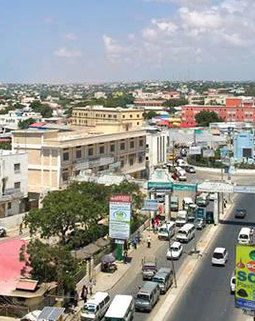In the realm of economic development in Somalia, the tire market stands as a noteworthy player, poised for significant growth. The surge in automobile sales and the expansion of the vehicle fleet in the country have paved the way for a thriving tire market. According to a TechSci Research report titled "Somalia Tire Market Forecast & Opportunities, 2022," the sector is anticipated to witness unit sales surpassing 100,000 units by 2022.
This projection is underpinned by the increasing demand for vehicles and the replacement-driven nature of the tire market in Somalia.Automotive Landscape and Fleet Expansion
The growth trajectory of Somalia's tire market is intricately linked with the country's automotive landscape dynamics. The vehicle fleet in Somalia experienced substantial growth, rising from 73,111 units in 2012 to 86,703 in 2016, reflecting a Compound Annual Growth Rate (CAGR) of 4.3% during 2012 - 2016. Somalia's tire market is primarily replacement-driven as an import-driven economy with no local automobile manufacturing facilities.
Market Dynamics: Budget Tires to Ultra Budget Tires
The absence of domestic automobile manufacturing facilities has given rise to a tire market that is predominantly replacement-focused. The period from 2013 to 2015 witnessed a notable increase in per capita GDP, positively influencing the demand for vehicles and tires.
In 2016, the Somalia tire market experienced significant market penetration of ultra-budget tires, followed by budget tires. The market dynamics reflect the price sensitivity of the region, with a surge in imports of low-priced Chinese tires compared to other European and American brands.
Regional Dominance and Vehicle Segments
The Lower region of Somalia emerged as the epicenter of tire demand in 2016, driven by the substantial population in this region. With a growing vehicle fleet, this region is expected to maintain its dominance in the Somalia tire market.
The passenger car tire market is led by SUV tires, followed by those for sedans and hatchbacks. Somalia's rugged terrain and poor road infrastructure contribute to excessive wear and tear on SUV tires, resulting in a faster replacement cycle.
Influencing Factors: Fiscal Policies and Perception Shift
The report emphasizes the pivotal role of constantly improving fiscal and regulatory policies in Somalia, coupled with a perceptual shift towards Chinese tire brands. This shift has increased demand for tires, particularly from the price-sensitive market. The influence of imported low-priced Chinese tires has seen a notable uptick, challenging the market position of leading European and American tire brands.
Future Projections and Emerging Trends
The outlook for Somalia's tire market indicates a promising future, driven by the expected increase in the inflow of used cars. This influx is anticipated to fuel rapid tire replacement demand growth between 2017 and 2022. Emerging trends, such as a changing perception of Chinese tire brands and the country's increasing price sensitivity, are shaping the market dynamics.
Conclusion: Treading Towards Progress
Somalia's tire market presents a compelling narrative of growth, driven by factors such as expanding vehicle fleets, replacement-driven demand, and evolving market preferences. As Somalia accelerates on its economic development journey, the tire market emerges as a key player, contributing to job creation, skill development, and overall socio-economic progress.





